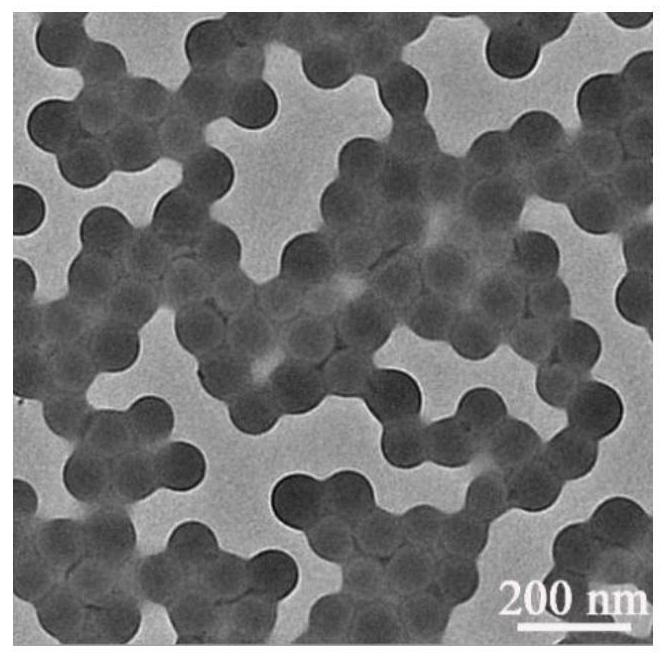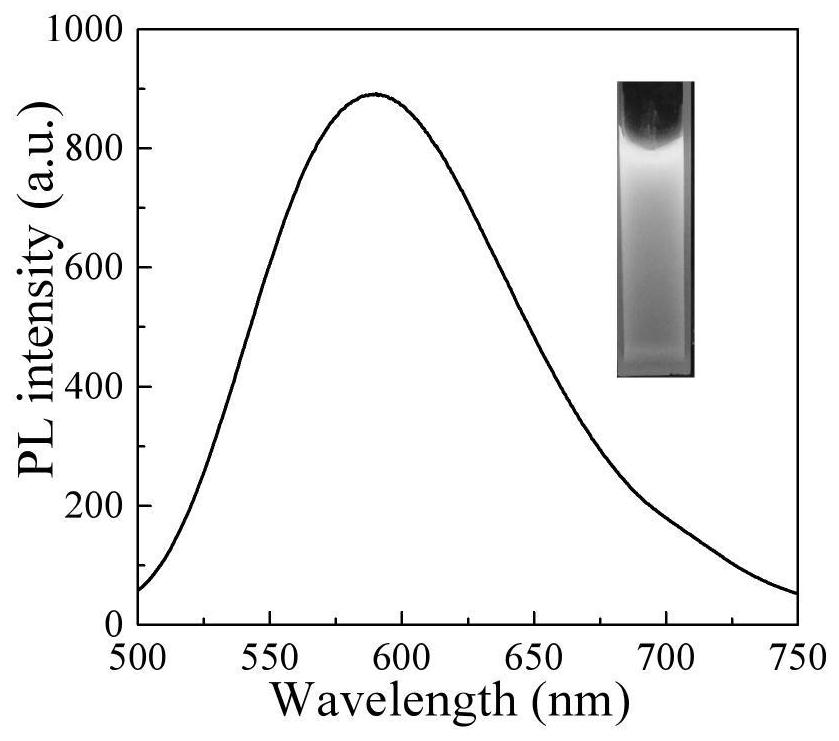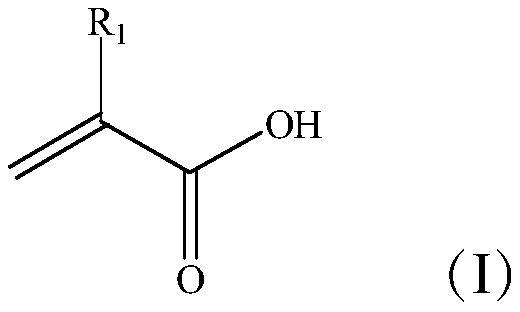A kind of preparation method of the AIE polymer nanoparticle of carboxyl group and polypeptide modification
A nanoparticle and polypeptide modification technology, applied in chemical instruments and methods, luminescent materials, etc., can solve problems such as limiting the application value in the field of selective cell imaging, and achieve strong cell uptake, good biocompatibility, and cell imaging effects Good results
- Summary
- Abstract
- Description
- Claims
- Application Information
AI Technical Summary
Problems solved by technology
Method used
Image
Examples
Embodiment 1
[0089] Weigh 0.2g O-50 emulsifier and dissolve it in 12.5g deionized water to obtain an aqueous phase solution.
[0090] Weigh 0.01g of AIE-6 molecules and 0.02g of azobisisobutyronitrile and dissolve in a mixed solution of 0.06g of n-hexadecane, 0.1g of acrylic acid, 0.45g of styrene and 0.45g of methyl methacrylate to obtain an oil phase solution Add the water phase solution to the oil phase solution, and make a coarse emulsion after stirring and pre-emulsifying; place the container containing the coarse emulsion in an ice-water bath, and use an ultrasonic wave with a power of 400W for 9 minutes to obtain a stable monomer Miniemulsion: Nitrogen was passed to remove oxygen, the temperature was raised to 65° C., and reacted for 6 hours under the protection of nitrogen to prepare a carboxyl-modified AIE polymer nanoparticle emulsion. With a molecular weight cut-off of 5000g·mol –1 The dialysis bag was dialyzed for three days, and the water change frequency was changed every 2h...
Embodiment 2
[0104] Weigh 0.5 g of Tween 20 and dissolve it in 15 g of deionized water to obtain an aqueous phase solution.
[0105] Weighing 0.0075g of AIE-12 molecules and 0.015g of azobisisoheptanonitrile were dissolved in a mixed solution of 0.08g of n-hexadecane, 0.15g of methacrylic acid and 1.35g of methyl methacrylate to obtain an oil phase solution; Add the water phase solution to the oil phase solution and pre-emulsify with stirring to obtain a coarse emulsion; place the container containing the coarse emulsion in an ice-water bath, and use an ultrasonic wave with a power of 200W for 20 minutes to obtain a stable monomer fine emulsion. Emulsion: Nitrogen was passed to remove oxygen, the temperature was raised to 60° C., and under the protection of nitrogen, the reaction was carried out for 12 hours to prepare a carboxyl-modified AIE polymer nanoparticle emulsion. With a molecular weight cut-off of 5000g·mol –1 The dialysis bag was dialyzed for three days, and the water change fr...
Embodiment 3
[0111] Weigh 0.3g of MOA-9 and dissolve in 15g of deionized water to obtain an aqueous phase solution.
[0112] Weigh 0.003g of AIE-15 molecules and 0.05g of azobisisobutyronitrile and dissolve in a mixed solution of 0.08g of n-hexadecane, 0.05g of methacrylic acid, 0.45g of methyl methacrylate and 0.55g of styrene to obtain oil phase solution; add the water phase solution to the oil phase solution, and make a coarse emulsion after stirring and pre-emulsifying; place the container containing the coarse emulsion in an ice-water bath, and use an ultrasonic wave with a power of 600W for 5 minutes to obtain a stable Monomer miniemulsion; pass nitrogen to remove oxygen, raise the temperature to 60°C, and react for 24 hours under the protection of nitrogen to prepare carboxyl-modified AIE polymer nanoparticle emulsion. With a molecular weight cut-off of 5000g·mol –1 The dialysis bag was dialyzed for three days, and the water change frequency was changed every 2h on the first day, e...
PUM
| Property | Measurement | Unit |
|---|---|---|
| emission peak | aaaaa | aaaaa |
| particle size | aaaaa | aaaaa |
| particle size | aaaaa | aaaaa |
Abstract
Description
Claims
Application Information
 Login to View More
Login to View More - R&D
- Intellectual Property
- Life Sciences
- Materials
- Tech Scout
- Unparalleled Data Quality
- Higher Quality Content
- 60% Fewer Hallucinations
Browse by: Latest US Patents, China's latest patents, Technical Efficacy Thesaurus, Application Domain, Technology Topic, Popular Technical Reports.
© 2025 PatSnap. All rights reserved.Legal|Privacy policy|Modern Slavery Act Transparency Statement|Sitemap|About US| Contact US: help@patsnap.com



